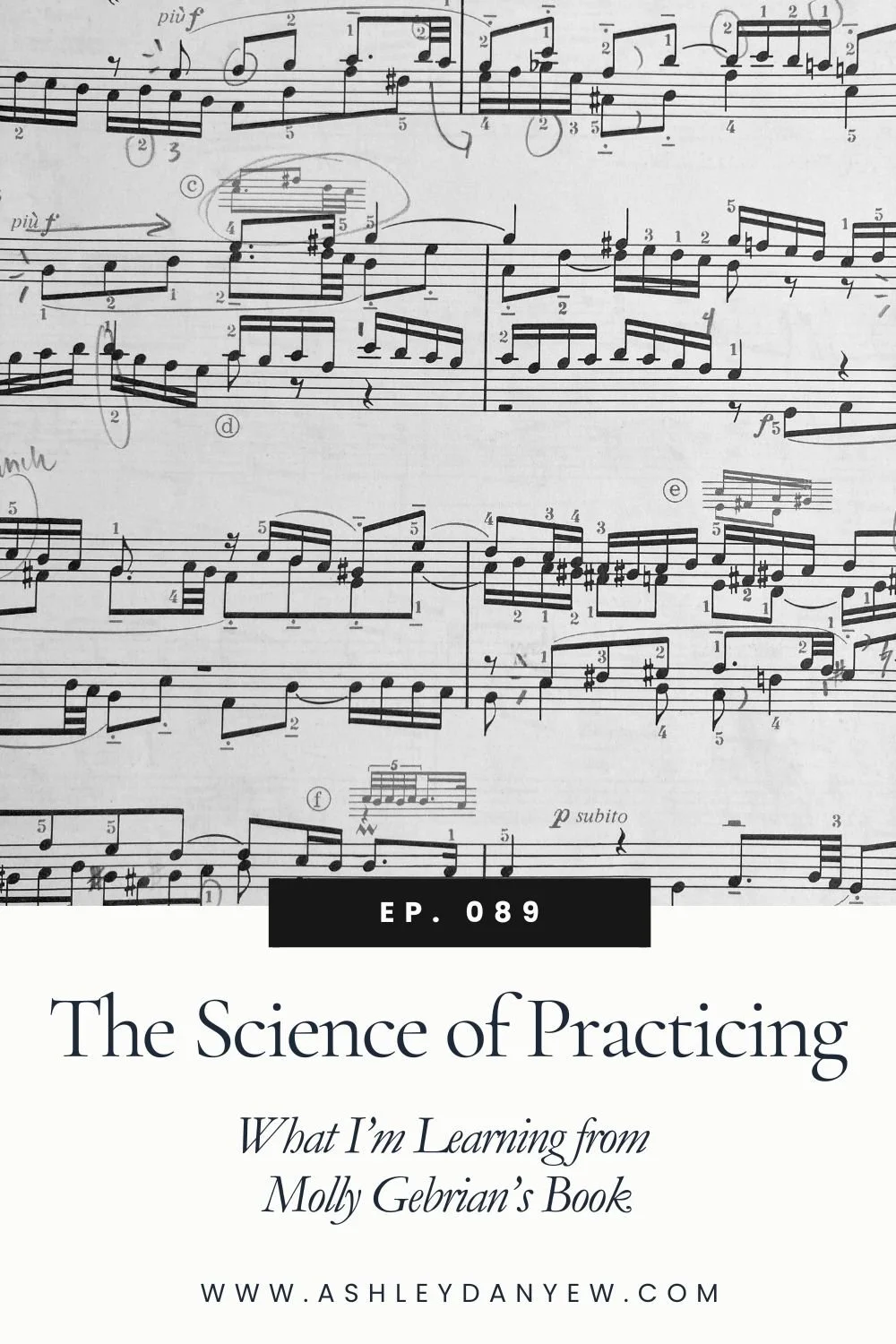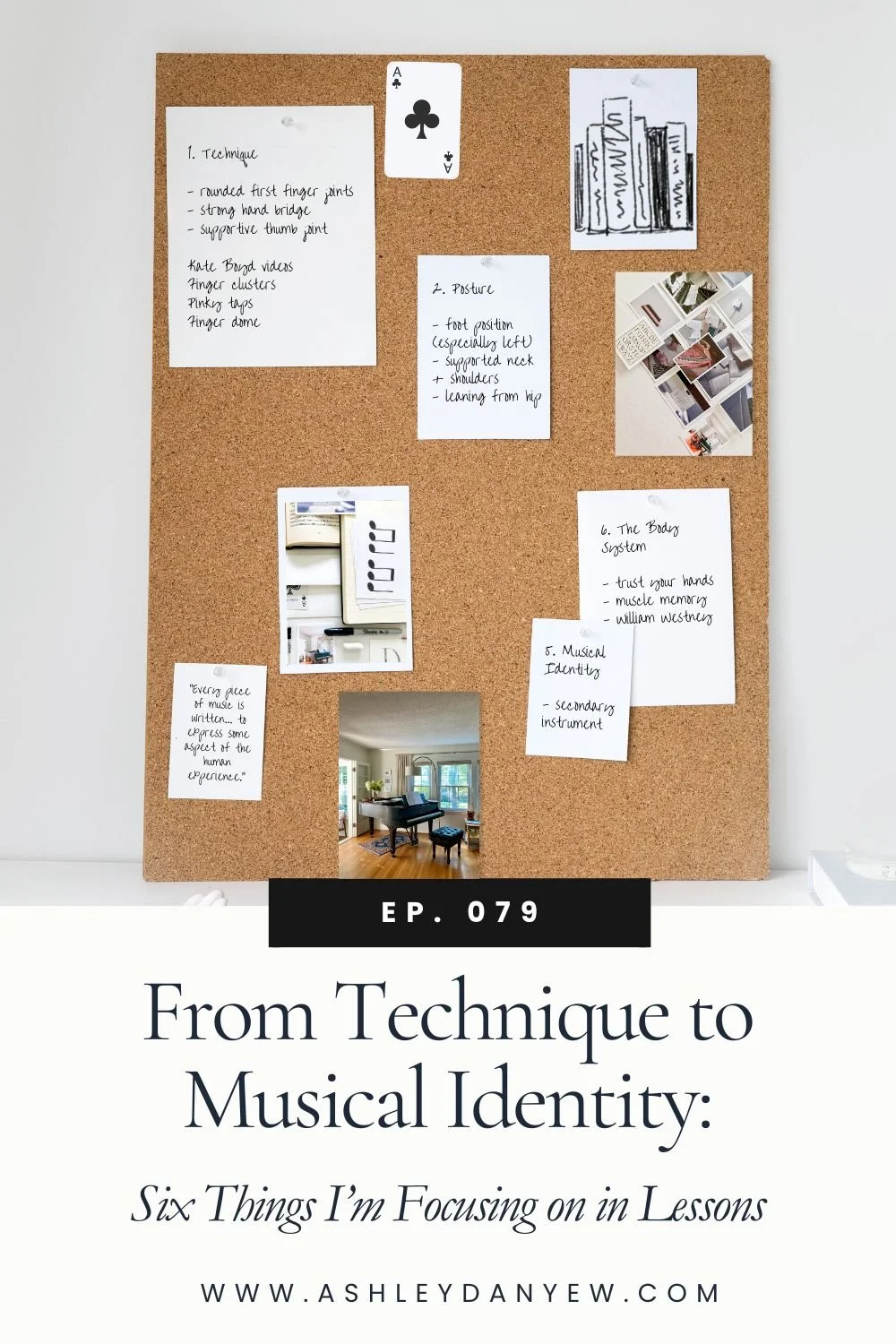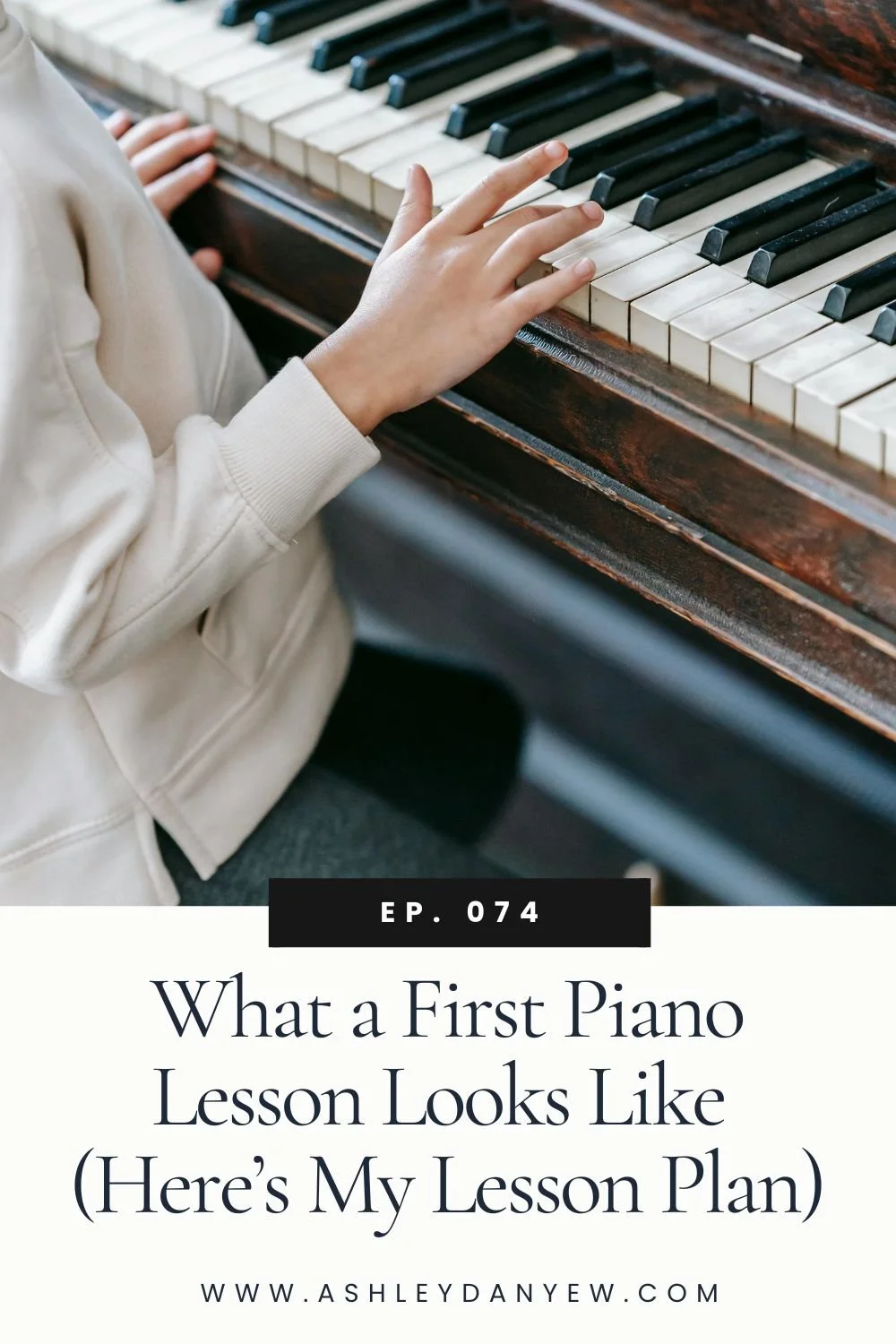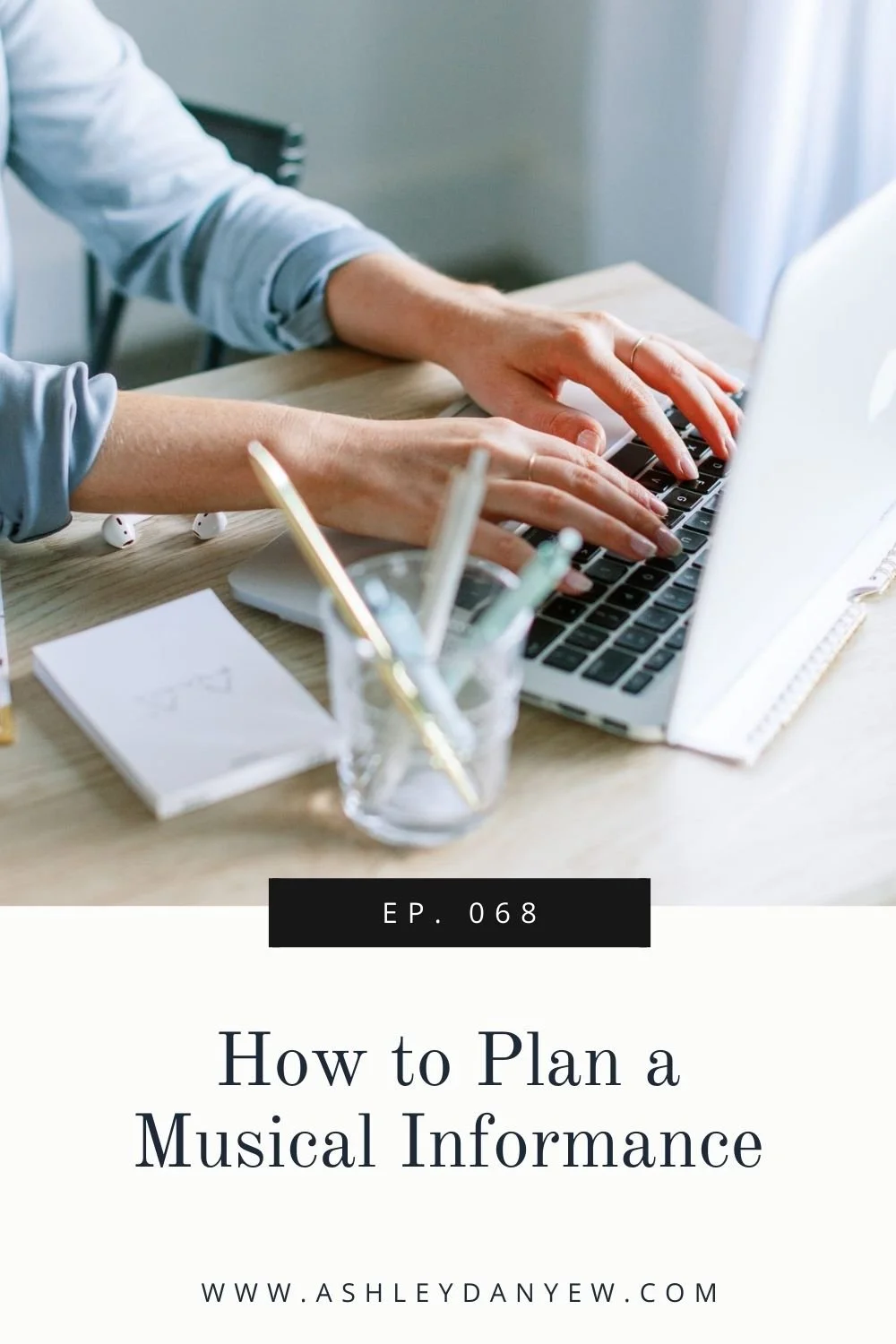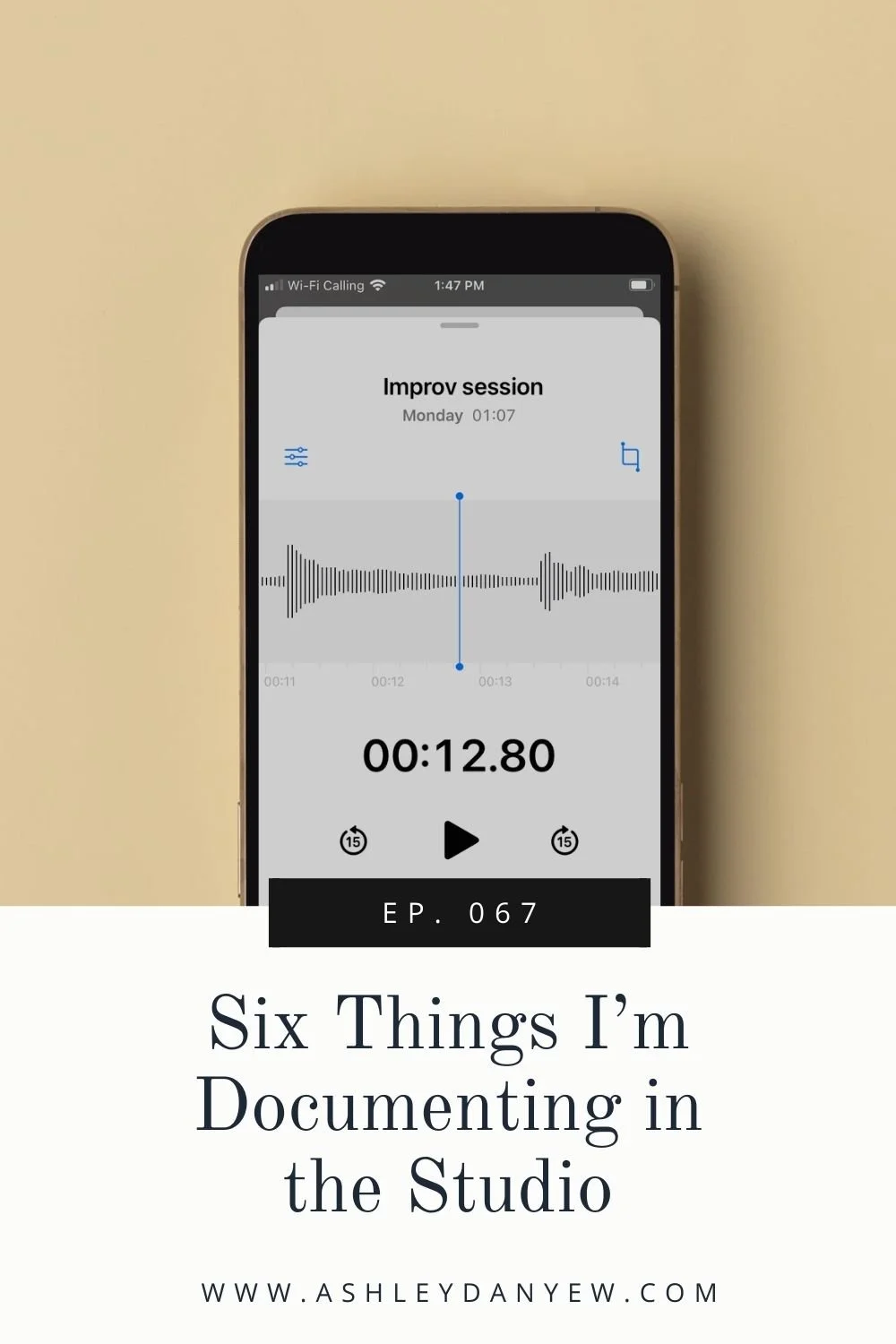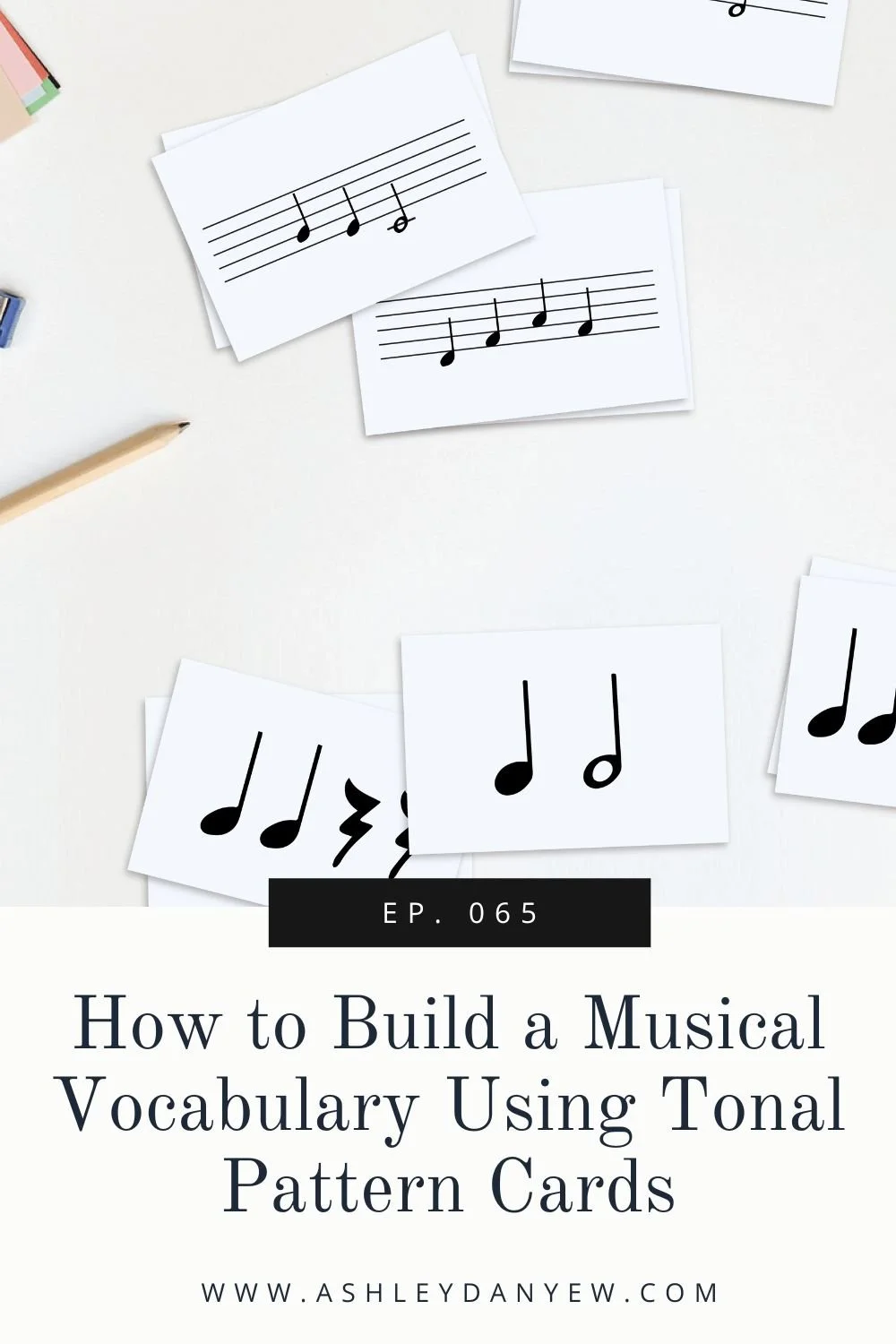Resources Mentioned
*Disclosure: I get commissions for purchases made through links in this post.
From Six to Twelve for Piano, Op. 119 (Amy C. Beach)
Album des Enfants, Op. 123 (Cecile Chaminade)
6 petites pièces (Charlotte Sohy)
Album des Enfants, Op. 126 by Cecile Chaminade
Scenes Enfantines, Op. 92 by Mel. Bonis
Canoeing, Op. 119, No. 3 by Amy Beach
Portraits in Jazz by Valerie Capers
25 Progressive Etudes by Louise Farrenc
Little Gems for Piano (Paula Dreyer)
Interview with Paula Dreyer (Musician & Co.)
Up-Grade! (Pam Wedgwood)
The Old Boatman (Florence Price)
Gifts of Asia (arr. Emilie Lin)
Splattered with Fun! (Glenda Austin)
I'm Not Scared (Nancy Telfer)
Pictures and Beyond, Book 1 and Book 2 (Dianne Goolkasian Rahbee)
At the Piano (Katherine Hoover)
Piano Dreams (Anne Terzibaschitsch)
Cool Piano, Book 1 (Heather Hammond)
Jazz, Rags, and Blues, Book 1 + Christmas Jazz, Rags, and Blues (Martha Mier)
Enchanted World (Winnie the Pooh) (June Armstrong)
At the Lake (Elvina Truman Pearce)
Very Easy Little Peppers (Elissa Milne)
Higgledy Piggledy Jazz (Elena Cobb)
Impressions: Suite for Solo Piano (Jennifer Eklund)
The Best of Melody Bober, Book 2 (Melody Bober)
Victress Sessions (Andrea Dow)
A Collection of Florence Price's Piano Teaching Music Vol 1. Beginning Pieces (Florence Price)
I was talking with one of my high school students a few weeks ago about music by women composers.
We were studying "Canoeing" by Amy Beach in the Celebration Series Level 7 Piano Repertoire book, the third piece in her Op. 119 collection, From Six to Twelve for Piano written in 1927. "Amy Beach was the first American woman to achieve widespread recognition as a composer of large-scale works," I read from my iPad.
My student, in addition to piano and double bass, her primary instrument, is also a composer. Her most recent work was a four-and-a-half-minute piece for string ensemble that she wrote over a weekend!
She's also picked up numerous other instruments through the years—harpsichord, marimba, viola, bass drum, guitar, and even a Viola da Gamba.
We listened to a recording of the piece and played through the score. We discussed how the rippling eighth notes between the hands create a sense of paddling, left then right. We talked about Amy Beach's life, marriage, and musical career.
"This piece reminds me of works by a few other women composers," I said after a few minutes. I pulled up a copy of Cecile Chaminade's Album des enfants, Op. 123 written in 1906 and played the first page.
"Another female composer writing around this same time was Charlotte Sohy," I said. "She has a set of piano pieces that might be fun for you to play," I said, pulling up the score for 6 petites pièces on my iPad. Her eyes lit up. "Yes, I'd like that," she said, nodding.
This is how the idea began for studying and learning music by women composers during the month of March, International Women's Month.
In this episode, I'll talk about the composers and scores we'll study over the next four weeks and share a resource list of elementary and intermediate piano music written by women composers that you can reference in your teaching.
Designing a Study Unit on Music by Women Composers
Before we get into repertoire and composer details, let me give you a little context to explain my planning approach.
I talked about my lesson-planning process back in Ep. 047, but sometimes I find it helpful to plan a study unit for my older students. A study unit is usually around 4 weeks and it gives us an opportunity to go in-depth on a particular topic and build on each week.
This came about because the high school student I mentioned at the beginning had a wrist injury that has prevented her from playing with her left hand since the beginning of January. But despite that, we've continued our 60-minute weekly lessons by shifting our priorities and working through a study unit.
I outlined five different components that I wanted to cover in every lesson:
Aural skills (clapbacks, playbacks, intervals, chord progressions)
Score study (a different style period each week, which led us to Amy Beach's "Canoeing" a few weeks ago)
Rhythm reading
Theory worksheets
Sight-reading (as a duet with me playing the left hand)
As she eases back into playing this month, I want to choose repertoire that is accessible and not too technically demanding. In addition, since I know she is also interested in composition, I want to provide a variety of examples that we can study, analyze, and interpret together.
I started by making a list of collections that are in the public domain. Then, I added a few pieces that I own or that my student owns.
I came up with the following:
Album des Enfants, Op. 123 and 126 by Cecile Chaminade
Scenes Enfantines, Op. 92 by Mel. Bonis
6 petites pièces by Charlotte Sohy
Canoeing, Op. 119, No. 3 by Amy Beach
Portraits in Jazz by Valerie Capers
25 Progressive Etudes by Louise Farrenc
I mentioned Cecile Chaminade at the beginning; she was a prolific French composer, writing over 400 pieces in her lifetime. She lived from 1857–1944 and gave numerous recitals and concerts around the world, including in the U.S. at Carnegie Hall, Symphony Hall, and the Academy of Music. Her compositional style is very Romantic, as seen in her mélodies and character pieces. (source)
I like Prelude, Op. 123, No. 1, Air de Ballet, Op. 123, No. 11, and Elegie op. 126 no.7.
Mel. Bonis was another French romantic composer. She lived from 1858-1937 and wrote over 300 pieces including chamber works, piano music, choral pieces, organ music, and mélodies. She studied with the famous César Franck and continued her studies with him at the Paris Conservatory in 1877. Her music shows the influence of impressionism and orientalism as well as the music of Franck, Faure, and Saint-Saëns. (source)
From her Op. 92, I like Cache-Cache, No. 2, which means "hide and seek."
Valerie Capers is an African-American composer and pianist born in 1935. She is also legally blind. Her collection, Portraits in Jazz, features 12 pieces spanning a variety of jazz styles, each influenced by a different jazz artist from Ella Fitzgerald to Duke Ellington to Billie Holiday.
I love "Billie's Song" and "A Taste of Bass" could be fun since my student is a bass player.
I first learned about 19th-century composer Louise Farrenc as an undergraduate student at the University of Georgia. I don't remember exactly how I discovered one of her chamber music pieces, but I remember trying to learn everything I could about her. I even asked the music librarian, Mr. Kelly, for help in my research, but at the time, there wasn't much to find.
Fortunately, now, Louise Farrenc is more well-known and her music is performed more frequently. One of her collections that I plan to introduce to my student during our Women in Music unit study is 25 Progressive Etudes for Piano, Op. 50. The first etude is probably a Level 4, or so, and as the title suggests, they get progressively more difficult from there.
I like No. 4 in E Minor, No. 11 in D minor, and No. 12 in C major.
Repertoire List: Piano Music by Women Composers
I want to mention a few other women composers and collections here that are on my list for elementary and intermediate students. Look for this list and all the resource links on where to find this music in the show notes:
Little Gems for Piano - beautiful rote pieces for beginners of all ages written by Paula Dreyer. We actually just interviewed Paula for our Entrepreneur Profile series on the Musician & Co. blog.
Up-Grade! - a unique series designed to bridge the gap between grades written by Pam Wedgwood. Available for grades 0-1, 1-2, 2-3, 3-4, and 4-5.
The Old Boatman - a 2-page early intermediate piece by Florence Price
Gifts of Asia - an early intermediate collection of folk music from China, Japan, Korea, and Taiwan arranged by Emilie Lin
Splattered with Fun! - six white-key major and minor pieces for late elementary students written by Glenda Austin
I'm Not Scared - 10 spooky pieces for early intermediate players by Nancy Telfer. Great for Halloween!
Pictures and Beyond, Book 1 - contemporary, avant-garde pieces for elementary students written by Dianne Goolkasian Rahbee. Book 2 includes pieces for early intermediate and intermediate students.
At the Piano - a collection of six pieces by Katherine Hoover
Piano Dreams - creative pieces for elementary and intermediate students with programmatic titles Anne Terzibaschitsch
Cool Piano, Book 1 - a popular supplemental series for grades 1-2 by Heather Hammond. Available up to grades 6-7 (Book 6).
Jazz, Rags, and Blues, Book 1 - my students love Martha Mier's music. The student I mentioned at the beginning started with Book 1 and I think she has Book 5 now. We also love Martha Mier's duet collections and Christmas Jazz, Rags, and Blues!
Enchanted World (Winnie the Pooh) - a creative recreation of A.A. Milne's Winnie the Pooh for piano, grades 1-3 written by June Armstrong
At the Lake - an inspiring collection of elementary and late elementary solos and duets inspired by the lake written by Elvina Truman Pearce
Very Easy Little Peppers - jazz miniatures written for late beginners by Australian composer, Elissa Milne
Higgledy Piggledy Jazz - a collection of jazzy solos written by Elena Cobb for late elementary and early intermediate students including sections for students to improvise using the 12-bar blues. P.S. If you’re interested in learning how to introduce blues to your students, tune into Ep. 045 - The Blues Composition Project.
Impressions: Suite for Solo Piano - "New Age" lyrical solos for intermediate students by Jennifer Eklund
The Best of Melody Bober, Book 2 - a wonderful collection of intermediate and late intermediate solos
Victress Sessions - modern interpretations of works by women composers written for early intermediate students by Andrea Dow. A great way to introduce composers such as Louise Farrenc, Amy Beach, Teresa Carreño, Clara Schumann, and more.
A Collection of Florence Price's Piano Teaching Music Vol 1. Beginning Pieces - beginning and elementary teaching pieces written by Florence Price and edited by Lia Jensen-Abbott
This of course is only a starting place and is by no means a comprehensive list. A few 20th- and 21st-century women composers worth mentioning are Nancy Faber, Jane Bastien, Helen Marlais, Frances Clark, Louise Goss, Catherine Rollin, Chee-Hwa Tan, and Chrissy Ricker.
I’d love to hear from you:
I hope this episode inspires you to seek out repertoire by women composers, this month and throughout the year to share with your students.
Who are your favorite women composers? What are your favorite collections? Leave a comment on the show notes or send me a DM on Instagram and let me know. I'd love to continue expanding my repertoire list, as well!



